 Image search results - "Market" Image search results - "Market" |

Sakana-no-Furusato Bandaijima Fish market near Toki Messe. さかなのふるさと万代島
|
|

Crab
|
|

Crab
|
|
|

Salmon
|
|

Officially called the Tokyo Metropolitan Central Wholesale Market, this sprawling complex handles mainly fish, but also fruits and vegetables. This is outside the market building.Update: Tsukiji Fish Market closed on Oct. 6, 2018 since it moved to Toyosu. These pictures were taken when toursts were still free to roam around the auction area and inner market. Now a blast from the past. Sorry you missed it.
|
|

The market is near Tsukijishijō Station on the Toei Ōedo Line and Tsukiji Station on the Tokyo Metro Hibiya Line. The first subway arrives at around 5:20 am. First you walk through the fruit section..
|
|

Fruit section.
|
|

Watch out for these speeding trolleys. They are almost everywhere.
|
|

There is no map of the place so you may or may not find the tuna auctions. It's also easy to get lost in the market. This is the fresh fish tuna storage area.
|
|

Never saw this much tuna in my life.
|
|

These fish can be huge, bigger and heavier than a sumo wrestler.
|
|

All the fish are labeled. They might indicate where the fish was caught (or raised).
|
|

Tails are cut off to show the flesh color.
|
|

Buyers check the color of the flesh to determine how fatty the fish is.
|
|

Cut-off tails
|
|

Headless tuna carcasses
|
|
|

Tuna head
|
|
|

The market building has many signs of its old age.
|
|

Frozen tuna auctions at Tsukiji Fish Market.
|
|
|

Frozen tuna anyone?
|
|
|
|

Headless frozen tuna.
|
|

These frozen fish did not show any signs of melting. Wonder how long it takes for them to defrost.
|
|
|
|
|
|

Each fish is worth thousands or tens of thousands of US dollars.
|
|

Looks good to me.
|
|

Tying a ribbon on fish.
|
|
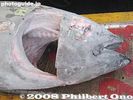
Frozen tuna head
|
|

Tuna belly, the fatty part of the fish for toro sashimi.
|
|

Looks yummy.
|
|

After the auctions are over, they haul out the fish using a variety methods.
|
|

Hauling these tuna on this lift looked easy.
|
|
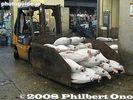
All full and ready to go. Gee, how much is all that tuna worth??
|
|

Smaller trolley for a smaller haul.
|
|
|
|

Hand-drawn cart.
|
|

Hand-drawn cart, good for four fish.
|
|

Good exercise in the morning.
|
|
|
|
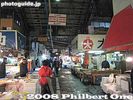
The fish is taken to the fish stalls in the market.
|
|
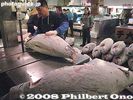
The frozen tuna is cut up into quarters lengthwise by a band saw.
|
|
|

Quite a few more to cut up.
|
|
|

After the fish is cut, they shave it with an ax.
|
|

Cutting up a fresh fish. They use a long, sharp knife, and not a band saw.
|
|

Tuna knives
|
|

I wonder how long it takes to be able to cut up a giant tuna.
|
|
|
|

Where the head was attached.
|
|

The fresh tuna is cut up into smaller blocks.
|
|

This size is easy to sell to mom and pop sushi restaurants.
|
|

Fresh tuna
|
|

Caught in the Pacific Ocean.
|
|

The tuna flesh between the rib-like bones is also choice meat. It is scraped off with a spoon.
|
|
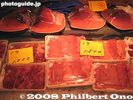
Packaged to sell.
|
|

The huge fish market consists of rows and rows of fish monger stalls, divided by narrow aisles.
|
|
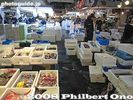
Styrofoam and plastic cartons contain all kinds of fish.
|
|
|

Fish waiting to be decapitated.
|
|
|
|
|

OK, which one's next?
|
|

Puffer fish swim happily, ignorant of their ultimate fate.
|
|
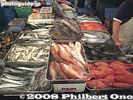
Fish and more fish...
|
|
|
|
|

Fish in ice
|
|
|

Eels
|
|

Sea urchin (uni), one of my favorites.
|
|
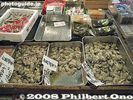
Oysters
|
|

Shellfish
|
|

Sea urchins
|
|
|

Shellfish
|
|
|

Squid in black ink
|
|

Octopi
|
|

Tako
|
|

Shrimp
|
|
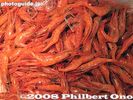
Prawns
|
|
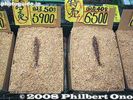
Prawns
|
|
|

Frozen crab
|
|
|
|
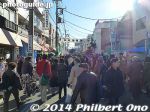
The Setagaya Boro-ichi is held on Dec. 15-16 and Jan. 15-16 annually.A large outdoor flea market of used and new clothing, antiques, household items, food, plants, and crafts.
|
|

All sorts of knickknacks on sale. Some 700 stalls line the a few narrow streets near Setagaya and Kamimachi Stations on the Tokyu Setagaya Line.It can get pretty crowded when it's not raining.
|
|

Boro-ichi started over 400 years ago in 1578 when Odawara daimyo Lord Hojo Ujimasa opened a market place in this area. It started out selling old clothing and used goods, so it came to be called "boro-ichi" (rag market). Today, vendors also sell antiques, used books, food, household items, and all kinds of knick-knacks.
|
|
|
|

Old kimono.
|
|
|
|
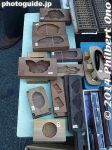
Molds
|
|

Monchhichi
|
|
|

Hanten
|
|
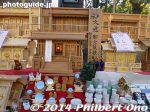
Household shrines
|
|

Household shrines, kamidana
|
|
|
|
|
|
|

Maneki neko or beckoning cat
|
|

Tools and knives
|
|

Wristwatches
|
|

Small cameras
|
|
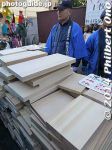
Cutting boards
|
|
|

Gyotaku print (Fish print)
|
|
|

Way to daikan mochi.
|
|
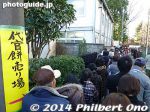
Long line to buy daikan mochi, one of the famous things about the boro-ichi.
|
|

Making daikan mochi on site.
|
|
|

Three flavors of daikan mochi.
|
|

Busy preparing and packaging the mochi.
|
|

Mochi sellers
|
|
|

Kinako (sweet soybean flour) daikan mochi
|
|

Azuki daikan mochi.
|
|
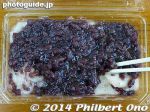
They really pile on the azuki.
|
|
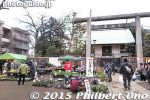
Near the shrine are potted flowers for sale.
|
|
|
|
|
|
|
|

Very fragrant pieces of wood such as hinoki cypress.
|
|

Amazake
|
|

Taiko drums for sale
|
|
|

Mochi mortars for sale.
|
|

Pins for collectors.
|
|

Setagaya Boro-ichi in the old days.
|
|
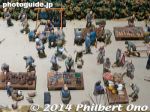
Setagaya Boro-ichi in the old days.
|
|
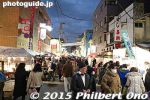
Also crowded at night.
|
|

Omi-cho Market entrance. 近江町市場
|
|

Omi-cho Market is full of seafood vendors.
|
|

Omi-cho Market crab vendor.
|
|

Omi-cho Market
|
|

Omi-cho Market
|
|

View of Mondecool from Nagahama Station.
|
|

Second floor entrance to Mondecool (Heiwado), a new two-story shopping center that opened in Feb. 2015.
|
|

Mondecool supermarket on 1st floor.
|
|

Mondecool 2nd floor shops include a shop selling local products.
|
|

Ibukiyama coffee shop on 2nd floor.
|
|
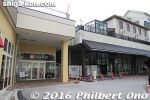
First floor of Mondecool has the restaurant, Joyfull. Right next to Nagahama Station.*Sadly, Joyfull restaurant at Nagahama Station Mondecool closed on Jan. 21, 2019 along with the Nagahama Inter Branch. The space is now a fitness center.
|
|

Joyfull is new and pleasant. *Sadly, Joyfull restaurant at Nagahama Station Mondecool closed on Jan. 21, 2019.
|
|

Joyfull menu. Very cheap. *Sadly, Joyfull restaurant at Nagahama Station Mondecool closed on Jan. 21, 2019.
|
|

Lunch at Joyfull. Food is good. *Sadly, Joyfull restaurant at Nagahama Station Mondecool closed on Jan. 21, 2019.
|
|

Old Nagahama Heiwado store being torn down in Jan. 2016.
|
|

Old Nagahama Heiwado store being torn down in Jan. 2016.
|
|
|
|

A low-rise shopping-restaurant complex called Ekimachi Terrace Nagahama will be built on the old Heiwado site. It later opened on July 29, 2017.
|
|

Toyosu Market is proving to be massively popular among the curious and sushi lovers. Toyosu Market is near Shijo-mae Station (seen on the left here) on the Yurikamome Line that runs between Shimbashi and Toyosu Stations.
|
|

Shijo-mae Station is connected directly to convenient pedestrian overpasses leading to the three Toyosu Market buildings/blocks. (That's Block 6 in the distance.)
|
|

The official website provides this very basic map of Toyosu Market. There are three blocks/buildings all connected to each other and to Shijo-mae Station via pedestrian overpasses.The red lines on this map show the pedestrian overpass to each block. All three buildings have a long tourist corridor with picture windows to see inside the market.
When the market is open (closed on Sun.), tourists can tour the three Toyosu Market buildings from 5 am to 5 pm. However, there's not much market action after late morning.
Besides the markets, there are sushi restaurants. The problem with this map is that it doesn't show where the restaurants are. They are in Blocks 6 and 7. Very crowded though.
Block 7 is where the tuna auctions are held, but the public won't be able to see the auction area until next Jan. But if you come here by 6 am or so, you should be able to see some tuna being hauled away on the floor. This block also has some restaurants.
Block 6 is the largest building of the three. This is where the sold tuna is carved up. This building also has a large sushi restaurant area that is not indicated on this map. The upper floor also has little shops (Uogashi Yokocho Market) for people who work at the market. They sell knives, tea, etc., and also sell to the public, but the shops close by 2 pm or so.
Block 5 is the fruit and vegetable market. Least crowded. No restaurants inside.
|
|

This is Block 7 where the tuna auctions are held. Let's enter here first. Notice the pedestrian overpass going into the building.
|
|

Directional signs for tourists are in Japanese, English, Chinese, and Korean.
|
|
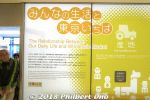
Block 7 has this small exhibition room with photos of the old Tsukiji fish market and other things.
|
|

Exhibition room in Block 7.
|
|

Tuna display in the small exhibition room in Block 7.
|
|

Toyosu Market's official mascot: Itchi-no.
|
|
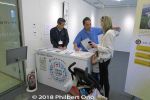
Information desk in Block 7's exhibition room. Lots of questions from foreigners to staff who couldn't really speak English.
|
|

Another crowd-pleasing tuna display in Block 7. Life-size model of the biggest tuna ever sold at Tsukiji fish market in April 1986. 2.88 meters long, 496 kg. Didn't say how much it sold for.
|
|

Block 7's tourist corridor with glass windows to see the tuna floor.
|
|

View of the tuna floor in Block 7. The floor was painted green for better contrast with the tuna's red flesh to assess the quality. We visited around 2 pm, so nobody was here. You have to come here by 6 am or 7 am to see some action.
|
|

Nice bilingual (Japanese and English) explanatory panels in the corridors. At 2 am, they unload the tuna here. At 4 am, buyers examine the tuna and assess the bid price. At 4:30 am, auction starts. At 7 am, the buyers are busy hauling away the tuna.
|
|

Hand signals to indicate numbers at auctions.
|
|
|

Block 7 has a restaurant section (not indicated on the official map). All crowded.
|
|
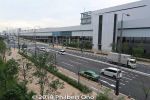
Next is Block 6 where the fish is carved up and sold to sushi restaurants and supermarkets. This is the largest building of the three.
|
|
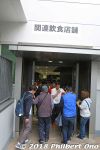
Block 6 has this small entrance to the restaurant section.
|
|

Block 6's restaurant section is the larger one at Toyosu Market. However, all the restaurants were totally crowded with people by 1:30 pm. Many restaurants that were at Tsukiji moved here or opened a branch here. Wanna wait 1 to 2 hours for sushi?? Nope, but these people don't seem to mind.
If you want sushi and don't want to wait in line, go to the Tsukiji Outer Market instead.
|
|

Long lines everywhere for sushi. The restaurants usually sell out by 2 pm, then they close. The huge crowd is either here for the novelty of a new attraction or they may be a strong sign of Toyosu Market's massive popularity.
I'm afraid the Tsukiji Outer Market will soon be marginalized by Toyosu Market. The market is the heart and soul, and it's now in Toyosu. The fishmongers in Toyosu are very gung-ho now and really want the Toyosu brand to exceed the old Tsukiji brand.
|
|

Only this coffee shop was not crowded. So we gave up having a sushi lunch at Toyosu Market. There are plans to build larger restaurant facilities in buildings adjacent to the market. However, they won't open until 2023.
|
|

After seeing the Block 6 restaurants, we walked along this long corridor and entered the market part of the building.
|
|

Block 6's market entry hall had two turret trucks on display.
|
|

Anybody could get on the turret truck and pose for photos.
|
|
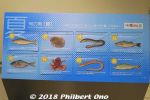
Also in the corridor, bilingual explanatory panels for identifying fish.
|
|

Block 6 has many windows for tourists, but you can hardly see anything. We can see just a small slit of the market floor. Just a pathway for the people and turret trucks, you don't see the sellers. However, I was later told that there is also a viewing deck on the first floor where there is a better view.
|
|

Block 6's upper floor has a section of shops called Uogashi Yokocho Market. (This section is not indicated on the official map.) These are small shops catering mainly to market workers. They also sell to the public. However, by 2:00 pm most of the stores were closing.
|
|

Cutlery shop in Uogashi Yokocho Market.
|
|

Map of Uogashi Yokocho Market in Block 6. Lots of little shops.
|
|

Many of the shops had congratulatory flowers for their grand opening.
|
|

Lastly, this is the fruit and vegetable market, Block 5.
|
|

Entrance to the fruit and vegetable market.
|
|

The observation corridor for tourists inside the fruit and vegetable market. Lots of windows, but they don't show much.
|
|
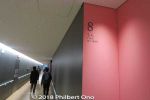
Each observation window was color-coded and named after a fruit or vegetable. A nice touch.
|
|

Not much of a view though.
|
|

Corridor wall also had panels explaining the history of the food and vegetable market in Tokyo.
|
|

Better view of the fruit/vegetable market toward the end of the corridor.
|
|
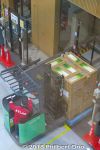
Hauling green onions.
|
|

At the end of the corridor, there's this big observation deck where you can see the wholesale section of the fruit and vegetable market.
|
|

Not much action in the fruit and vegetable market since it was in the afternoon.
|
|
|

The fruit market's biggest item is mikan (tangerines), then citrus.
|
|

The vegetable market's biggest item is cabbage, then daikon.
|
|

Across the water from Toyosu is the Tokyo Olympic Village under construction.
|
|

Inside the Yurikamome Line train. Since we couldn't eat sushi at Toyosu Market, we took the train to Toyosu Station two stops away and had a late lunch there instead.
|
|
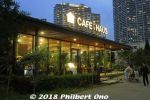
Near Toyosu Station is a restaurant called Cafe Haus. It's a good restaurant.
|
|

Inside Cafe Haus near Toyosu Station.
|
|

It wasn't exactly what we had planned for lunch, but it was good and healthy. At least we ate in Toyosu.
|
|

On a street corner near Toyosu Station is where 7-11's first store in Japan opened in 1974. It's still operating here in the same building. Toyosu is quite a new, modern town. Lots of construction still going on. It's turning out quite well.
|
|
|
|